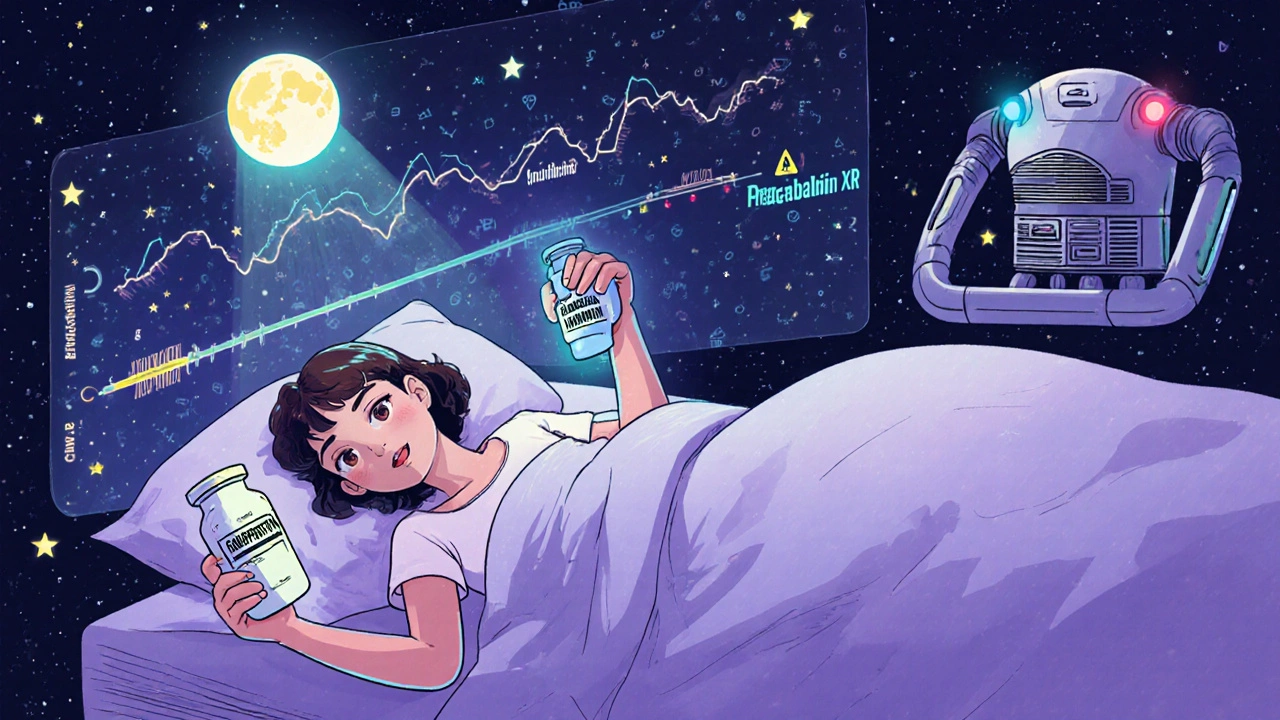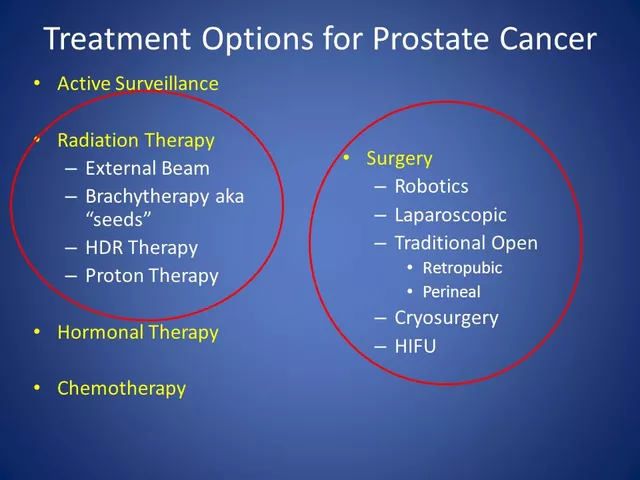What Is Neuropathic Pain?
Neuropathic pain isn’t the kind of ache you get from a sprained ankle or a headache. It’s a burning, shooting, or electric shock-like pain caused by damage to the nerves themselves. Think of it like a faulty wire in your house-when the signal gets scrambled, your body screams even when there’s no real danger. This pain shows up in conditions like diabetic neuropathy, shingles after the rash is gone (postherpetic neuralgia), or after chemotherapy. About 1 in 10 people deal with it at some point, and it doesn’t always respond to regular painkillers like ibuprofen or even opioids.
Why Gabapentin and Pregabalin Are First-Line Choices
Doctors don’t reach for opioids first when nerves are firing wrong. Instead, they turn to gabapentin and pregabalin-two medications that work differently than typical pain relievers. They’re not anti-inflammatories. They don’t block pain signals the way acetaminophen does. Instead, they calm down overactive nerves by targeting a specific part of the nerve cell called the α2δ subunit. This reduces the flood of pain signals sent to your brain. The International Association for the Study of Pain lists both as top-tier options, backed by solid research. For diabetic nerve pain and shingles-related pain, pregabalin has the strongest evidence (Level A), while gabapentin is still widely used and considered probably effective (Level B).
How Gabapentin and Pregabalin Are Different
At first glance, they look similar. Both are derived from GABA, the brain’s calming chemical. But they don’t work the same way in your body. Gabapentin’s absorption is messy-it doesn’t absorb well at high doses. If you take 900 mg, your body might absorb 60%. Take 3,600 mg, and that drops to 33%. That means doubling your dose doesn’t double your relief. Pregabalin, on the other hand, absorbs consistently-over 90% no matter the dose. This makes dosing predictable.
Another big difference? Speed. Pregabalin hits peak levels in your blood in under an hour. Gabapentin takes 3 to 4 hours-and even longer as the dose goes up. If you’re in acute pain and need relief fast, pregabalin often works quicker. One patient on Reddit described noticing a difference in 24 hours with pregabalin, but it took 3 to 4 days with gabapentin.
Potency and Dosing: What You Need to Know
Pregabalin is about 2.4 times more potent than gabapentin. That means 150 mg of pregabalin is roughly equal to 300-400 mg of gabapentin in pain relief. Most people start pregabalin at 75 mg twice a day and increase to 150 mg twice a day within a week. The usual target is 300 to 600 mg daily. Gabapentin starts at 300 mg once a day and slowly climbs to 900-3,600 mg daily, split into three doses.
Here’s the catch: gabapentin’s pain relief plateaus around 1,800 mg. Taking more won’t help much, but side effects keep climbing. Pregabalin keeps working up to 600 mg a day. That’s why doctors often prefer pregabalin for patients who need stronger, more consistent control.

Side Effects: What Patients Actually Experience
Both drugs cause dizziness, drowsiness, and swelling in the hands or feet. Weight gain is common too-about 1 in 4 people gain 5 pounds or more. On Drugs.com, gabapentin has a 7.9/10 rating from over 1,800 reviews. Pregabalin sits at 7.5/10 from 1,200 reviews. The difference? Pregabalin users report faster relief but more dizziness (32% vs. 28% for gabapentin). Weight gain is also slightly more common with pregabalin (27% vs. 22%).
Some patients swear by gabapentin for nighttime pain. Because it lingers longer at high doses, it can help people sleep through the night. One user wrote: "900 mg of gabapentin at bedtime keeps me asleep. Pregabalin wears off too soon." That’s a real-world trade-off: speed vs. duration.
Cost and Accessibility: The Real-World Factor
Cost isn’t just a footnote-it’s a dealbreaker for many. In 2022, gabapentin was prescribed over 68 million times in the U.S. Pregabalin? Only 12 million. Why? Price. Generic gabapentin can cost as little as $10 a month. Pregabalin, even as a generic, often runs $100-$200 a month. Insurance often blocks pregabalin unless you’ve tried gabapentin first. On GoodRx, 45% of negative pregabalin reviews mention coverage issues. Only 22% of gabapentin reviews say the same.
That’s why many primary care doctors start with gabapentin. It’s cheap, effective for many, and familiar. Pain specialists, who see more complex cases, are more likely to prescribe pregabalin from the start. In fact, 58% of pregabalin prescriptions come from specialty clinics, compared to just 38% for gabapentin.
Renal Dosing and Safety: A Critical Difference
If your kidneys aren’t working perfectly, both drugs need dose adjustments. But here’s where it gets tricky. Gabapentin’s dosing depends on your creatinine clearance, and the math isn’t simple. Doctors have to use formulas like the Mawer equation. Pregabalin? Much simpler. If your creatinine clearance is below 60 mL/min, you just cut the dose in half. That makes pregabalin easier to manage in older adults or people with kidney disease.
Both drugs carry a warning from the FDA about misuse. In 2020, pregabalin was added to the Risk Evaluation and Mitigation Strategies (REMS) program because of its potential for abuse, especially when mixed with opioids. Between 2012 and 2021, gabapentinoid-related overdose deaths tripled. Pregabalin was involved in 68% of those cases-even though it’s prescribed less often. That’s because it’s more potent and produces stronger euphoric effects in some people.

What’s New in 2025?
There’s a new extended-release version of pregabalin called Enseedo XR, approved in 2023. It gives steady levels in the blood with just one daily dose, reducing the peaks and valleys that cause side effects. Early data shows 22% fewer fluctuations than regular pregabalin. That could mean fewer dizziness episodes and better sleep.
Researchers at UCSF are also testing new versions of these drugs that target only the pain-related part of the α2δ subunit-leaving out the parts that cause dizziness. In animal studies, this approach cut side effects by 40% without losing pain relief. Human trials are coming.
Which One Should You Take?
There’s no universal answer. If you need fast relief, have stable kidney function, and can afford it, pregabalin is often the better choice. If you’re on a tight budget, have mild to moderate pain, or need something that lasts through the night, gabapentin still holds its ground.
Most doctors will start with gabapentin. If it doesn’t work well enough after 4-6 weeks, or if side effects are too much, they’ll switch to pregabalin. It’s not about which drug is "better." It’s about which one fits your life, your body, and your wallet.
What If Neither Works?
Not everyone responds to gabapentinoids. About 30-40% of patients get at least 50% pain relief. That means 6 in 10 don’t. If that’s you, other options exist: duloxetine (Cymbalta), venlafaxine (Effexor), topical lidocaine, or even low-dose nortriptyline. Some patients benefit from nerve blocks, physical therapy, or even neuromodulation devices. The goal isn’t just to find a pill-it’s to find a plan.
Can gabapentin and pregabalin be taken together?
No, doctors don’t recommend taking gabapentin and pregabalin together. They work the same way, so combining them doesn’t improve pain relief-it just increases side effects like dizziness, drowsiness, and swelling. If one doesn’t work, switch to the other, don’t stack them.
How long does it take for pregabalin to work for nerve pain?
Most people notice some improvement within a week, but full effects usually take 2 to 4 weeks. Some report feeling better in as little as 24 hours, especially compared to gabapentin, which often takes 3 to 7 days to show results.
Is pregabalin stronger than gabapentin?
Yes, pregabalin is about 2.4 times more potent. A 150 mg dose of pregabalin is roughly equal to 300-400 mg of gabapentin in pain relief. Pregabalin also has better absorption and a more predictable dose-response, making it more effective at higher doses.
Can you drink alcohol with gabapentin or pregabalin?
No. Alcohol increases drowsiness, dizziness, and the risk of falls. It can also raise the chance of breathing problems, especially in older adults or those with lung conditions. Even one drink can make side effects worse.
Do gabapentinoids cause weight gain?
Yes, about 20-27% of users gain weight, usually 5-15 pounds. It’s not just water retention-it’s increased appetite and slower metabolism. If weight gain is a concern, ask your doctor about starting low and moving slowly. Some patients find switching from pregabalin to gabapentin helps reduce it.
What happens if I stop gabapentin or pregabalin suddenly?
Don’t stop abruptly. You could get severe withdrawal symptoms: anxiety, insomnia, nausea, sweating, and even seizures in rare cases. Always taper down slowly under your doctor’s guidance. A typical taper takes 1-2 weeks, depending on your dose.
Final Thoughts
Gabapentin and pregabalin aren’t magic pills, but they’re two of the most reliable tools we have for nerve pain. Neither is perfect. Gabapentin is affordable and widely used, but its inconsistent absorption makes dosing a guessing game. Pregabalin works faster, more predictably, and often better-but at a price many can’t afford. The best choice depends on your pain level, kidney function, budget, and how your body reacts. Talk to your doctor about your goals: Is it faster relief? Better sleep? Lower cost? There’s no one-size-fits-all answer, but with the right approach, you can find a solution that works.






Jenny Lee
November 19, 2025 AT 14:10Gabapentin at night is a game-changer for my neuropathy-keeps me asleep without the next-day fog.
Evan Brady
November 20, 2025 AT 05:18Let’s be real-pregabalin’s absorption profile is why neurologists push it for complex cases. Gabapentin’s nonlinear kinetics are a pharmacist’s nightmare. You think you’re giving 1200mg, but your body’s only seeing 400mg of usable drug. Pregabalin? Clean, predictable, no guesswork. And don’t get me started on the renal dosing math for gabapentin-it’s like doing calculus while drunk.
That said, if you’re on Medicare and paying out of pocket? Gabapentin’s still the MVP. I’ve had patients switch from pregabalin to gabapentin just to save $150/month-and their pain didn’t worsen. It’s not about which drug is superior. It’s about matching the tool to the job.
And yes, weight gain is real. Not just water. I’ve seen patients gain 18 lbs on 300mg pregabalin daily. Appetite stimulation via hypothalamic GABA modulation. It’s not laziness-it’s pharmacology.
Also, the new Enseedo XR? Brilliant. Once-daily dosing cuts the peaks that cause dizziness. Fewer falls. Better sleep. More compliance. This is the future.
Alex Boozan
November 20, 2025 AT 10:48Stop pretending these drugs are safe. Gabapentinoids are gateway drugs to opioid abuse. The DEA flagged them in 2020 for a reason. You think your ‘nerve pain’ is legit? Or are you just chasing euphoria? I’ve seen patients stack these with benzos and drink while on them. Then they wonder why they crashed their car.
The FDA’s REMS program exists because these aren’t harmless pills. They’re psychoactive substances disguised as analgesics. And don’t tell me ‘it’s just for pain’-if it didn’t feel good, people wouldn’t abuse it.
mithun mohanta
November 21, 2025 AT 16:31Oh my god, this post is sooo deep!! I mean, like, α2δ subunit? Pharmacokinetics? Renal dosing?? I’m crying tears of intellectual enlightenment!! 🤯
But seriously-why is gabapentin even still a thing?? It’s like using a flip phone in 2025. Pregabalin is the iPhone 16 of neuropathic pain management!! Fast, sleek, efficient!! And don’t even get me started on the cost!! Why are Americans still clinging to $10 gabapentin like it’s holy water??
I live in India-we get pregabalin generics for $15/month!! You guys are living in the Stone Age!!
Also, alcohol?? Are you serious?? Of course you can’t mix it!! It’s basic!! I mean, come on!!
Premanka Goswami
November 22, 2025 AT 06:02They don’t want you to know this-but gabapentin and pregabalin are part of a pharmaceutical cartel designed to keep you dependent. The real cure? Magnesium, CBD, and grounding yourself on copper plates. But the FDA bans those because they can’t patent them. The ‘alpha-2-delta’ thing? A distraction. The real damage is done by EMFs from 5G towers amplifying nerve signals. That’s why your pain flares at night.
They added pregabalin to REMS not because it’s addictive-but because it exposes how weak their entire pain model is. They need you to believe you need pills. You don’t. You need truth.
And why is Enseedo XR ‘approved’? Because they want you to take it daily. One pill. One dependency. One less chance you’ll find the real solution: detoxing from processed food and sleeping on the earth.
Alexis Paredes Gallego
November 23, 2025 AT 23:31So let me get this straight-you’re telling me the FDA approved a drug that triples overdose deaths, and now we’re praising it because it’s ‘predictable’? And you call this medicine?
They’re not treating pain-they’re creating a chemical leash. Gabapentin? A cheap leash. Pregabalin? A luxury leash. Same outcome: you’re hooked, your kidneys are fried, and your brain’s been rewired to crave the next dose.
And the ‘extended-release’ version? That’s just the next level of control. They don’t want you to feel better-they want you to stay dependent. This isn’t healthcare. It’s corporate slavery dressed in white coats.
Next thing you know, they’ll patent ‘sleep’ and charge you for it.
Kevin Jones
November 25, 2025 AT 04:44It’s not about which drug is better. It’s about which version of suffering you’re willing to tolerate.
Gabapentin: slow, unreliable, cheap-like a rusty bike that gets you there, eventually.
Pregabalin: fast, precise, expensive-like a Tesla that breaks down every third time you use it.
We’re not choosing between two drugs. We’re choosing between two compromises.
Ram tech
November 26, 2025 AT 05:07gabapentin works for me but i dont wanna take it anymore its makes me feel like a zombie. pregabalin? too expensive. so i just sit and wait for the pain to go away. why do we even need drugs for this?
Erica Lundy
November 26, 2025 AT 17:52There is a metaphysical dimension to this discussion that is rarely acknowledged. The very notion of ‘neuropathic pain’ as a discrete, pharmacologically targetable entity presupposes a Cartesian dualism between mind and body-an outdated paradigm that reduces lived experience to neurochemical signaling. What we call ‘pain’ is not merely a signal, but a narrative constructed by the nervous system in response to trauma, meaninglessness, and isolation. To treat it with receptor modulators is to silence the voice of the body without listening to its message.
The rise of gabapentinoids reflects not medical progress, but cultural despair: we have outsourced our suffering to chemistry because we have lost the communal rituals, the embodied practices, the slow, patient healing that once held space for pain. We do not ask why the nerves are firing-we only ask how to stop them.
And yet, in this reduction, we risk losing the very thing that makes pain meaningful: its invitation to change. Perhaps the most radical act is not to take the pill, but to ask: What is this pain trying to tell me?
Saket Sharma
November 27, 2025 AT 14:46Let’s cut the BS-pregabalin is the only real option. If you’re still on gabapentin, you’re either broke or stubborn. And if you’re mixing it with alcohol? You’re not a patient-you’re a liability. The data is clear. Pregabalin’s potency, absorption, and dosing precision make it superior. End of story. Anyone who argues otherwise hasn’t seen a real neuropathy case.